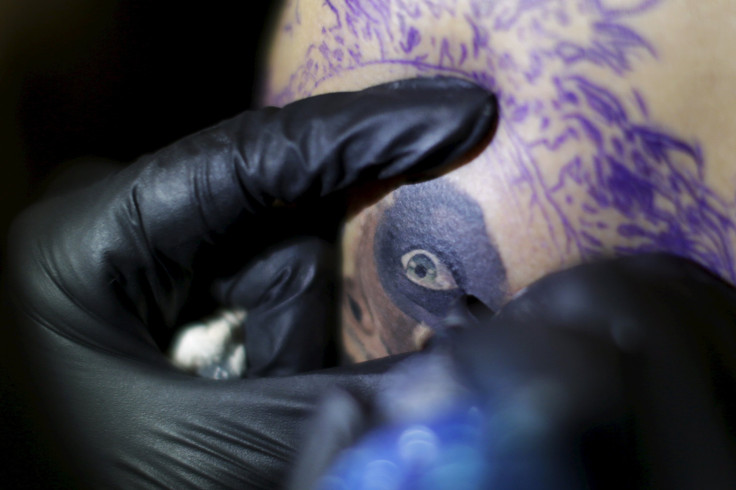Can Tattoos Kill You? Man Dies From Flesh-Eating Bacteria After Swimming With New Ink

The decision to get a new tattoo can be an emotional roller coaster that goes from certainty to slight self-doubt to extreme excitement. A 31-year-old man was living too much "in the moment" when he ignored new tattoo warnings, and went for a swim in the Gulf of Mexico five days later.
The result?
He died after flesh-eating bacteria in the ocean sent him into septic shock.
In the report, published in BMJ Case Reports, doctors determined the patient developed sepsis — an extreme reaction to an infection — from swimming in the ocean just five days after getting a crucifix tattoo on his right calf. He went to the emergency room three days after developing a fever and chills, and swelling over his tattoo site, and throughout both of his legs. Lab work showed he had high levels of liver enzymes, suggesting he had a history of chronic liver disease.
Read more: Eating Ice Cream For Breakfast May Improve Mental Performance
This left him susceptible to a V. vulnificus infection — a type of flesh-eating bacteria present in the ocean — and faced high mortality rate. According to the Centers for Disease Control and Prevention, the infection can cause symptoms such as watery diarrhea, abdominal pain, nausea, fever, and chills after 24 hours of ingestion. Doctors believe the recent tattoo was most likely how the bacteria entered the man's body.
A common mistake most dermatologists see is people returning to vigorous activity the day after getting inked, or even the same day.
“People who get body art tend to be active, so they do what they always do, which is to go rock climbing, or swimming, or lifting weights at the gym,” Dr. Jared Jagdeo, an assistant professor in the department of dermatology at the University of California who has researched tattoo after-care instructions, previously told Men's Health.
This man's death proves why you should never go swimming with a new tattoo: https://t.co/ABbKYvLLUB pic.twitter.com/LsMeE8sASW
— Men's Health Mag (@MensHealthMag) May 31, 2017
Typically, tattoos should be left to heal for a minimum of two weeks, until the flaking and peeling are finished, and the scabs have fallen off. Going swimming before the two-week mark makes your tattoo vulnerable to bacteria, sun, and chemicals, among other things. This is because tattoos are created through micro-abrasions on the skin, which makes it easier for bacteria to seep in.
After lab tests confirmed the man had V. vulnificus, doctors immediately started him on a double antibiotic treatment. However, his condition continued to decline, and he was placed on life support after suffering organ failure. Two weeks later, he improved, but went into septic shock, leading to kidney failure, and ultimately his death.
Read more: Playing A Musical Instrument Can Protect Brain Health
The doctors warn the link between chronic liver disease and the high mortality rate with infections of V. vulnificus is what left the patient vulnerable to infection. V. vulnificus is rare in healthy people, making up less than five percent of all V. vulnificus sepsis, according to the report.
They concluded: "Health providers should remain vigilant for V. vulnificus infections in patients with chronic liver disease and raw oyster ingestion or seawater exposure."
It's vital to always follow self-care instructions after getting new ink, and go the extra mile. In the U.S., only seven states require health departments to approve tattoo after-care instructions. The other states may not give such specific directions, so following proper after-care prevents infection and can even safeguard the image of your tattoo.
The moral of this cautionary tale: don't go swimming after getting a new tat.
© Copyright IBTimes 2024. All rights reserved.











